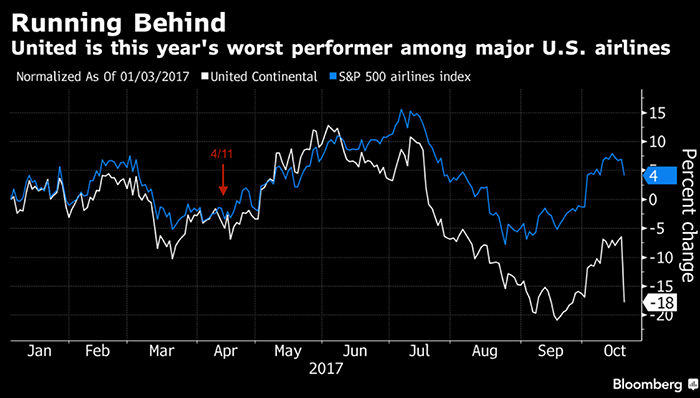Risk Insider: Nir Kossovsky
Reputation’s Going-Forward Effects
While speaking at a gathering of insurance executives in late October, I asked who was aware of the event in early April when a United Airlines passenger was forcibly removed from his seat. All knew about the incident and agreed that it damaged United’s reputation.
But only 20 percent thought that reputational damage threatened any material economic consequences to United Airlines. The other 80 percent thought of it as a cycle of bad press and nothing more. After all, said one attendee, the news outlets reported that United’s stock actually rose shortly after the event, despite its hamstrung crisis management efforts.
The disparity comes as no surprise. Companies traditionally view reputational crises as transitory events, with impacts that are mostly limited to temporary runs of bad press and are otherwise difficult to measure. What they don’t usually appreciate is the lasting going-forward effects of reputational crises.
It is true that when that UAL video went viral — followed by a less than sympathetic response by the company’s CEO — the company’s stock price dipped slightly for a short period of time, then rose significantly over the next two months.
Our data, which shows that the frequency and severity of economic damages connected to reputational injury increased by 461 percent over the past five years, also suggests that the real effects of that damage may take up to 13 weeks to first become evident and another 20 weeks to set in.
However, last week, United reported its 3Q results.
According to Bloomberg, Brandon Oglenski of Barclays Plc summarized it this way. ““When I look at your absolute earnings, they’re down more than your competitors’,” Oglenski said. “Your relative margin gap is widening, not narrowing. And more importantly for the investors on this call, the stock is now down, let’s call it, 20 to 25 percent versus the market this year.”
These results are not surprising. Our data, which shows that the frequency and severity of economic damages connected to reputational injury increased by 461 percent over the past five years, also suggests that the real effects of that damage may take up to 13 weeks to first become evident and another 20 weeks to set in.
So, UAL’s disappointing results, months after their reputational incident, are completely in line with the after effects of other corporate reputational events.
What this scenario demonstrates is the importance of companies recognizing these impacts, deterring these attacks and protecting themselves when they do occur.
Reputation damage with material economic consequences occurs when stakeholders are disappointed, disillusioned and angry. The reality is that no matter what protocols and best practices a company adopts, there is always a risk that something is going to go wrong.
Something could go amiss in the supply chain, a group in sales could overstep in an attempt to meet its targets, an executive could engage in inappropriate or illegal personal behavior — there is always that possibility.
The question is: how prepared is your company to deal with events like these? When the inevitable happens, will stakeholders consider it an atypical event in an otherwise sound company — or will they question whether it is symptomatic of larger issues?
The answer to those questions is the difference between the after-effects of the reputational incident passing quickly or being more long-lasting.
The best protection, of course, is deterrence. Having third party warranties in place, in the form of insurance products, sends a clear signal that the company’s governance practices are strong.
They support the narrative that the incident is an isolated one. And when that expressive value is not enough to repel the attack, they provide financial protection for the company, its board and executives.
As UAL demonstrates, the ability to deflect and recover from reputational crises is something that requires strategic thinking at the highest level of the organization and a clear organizational commitment over time.










